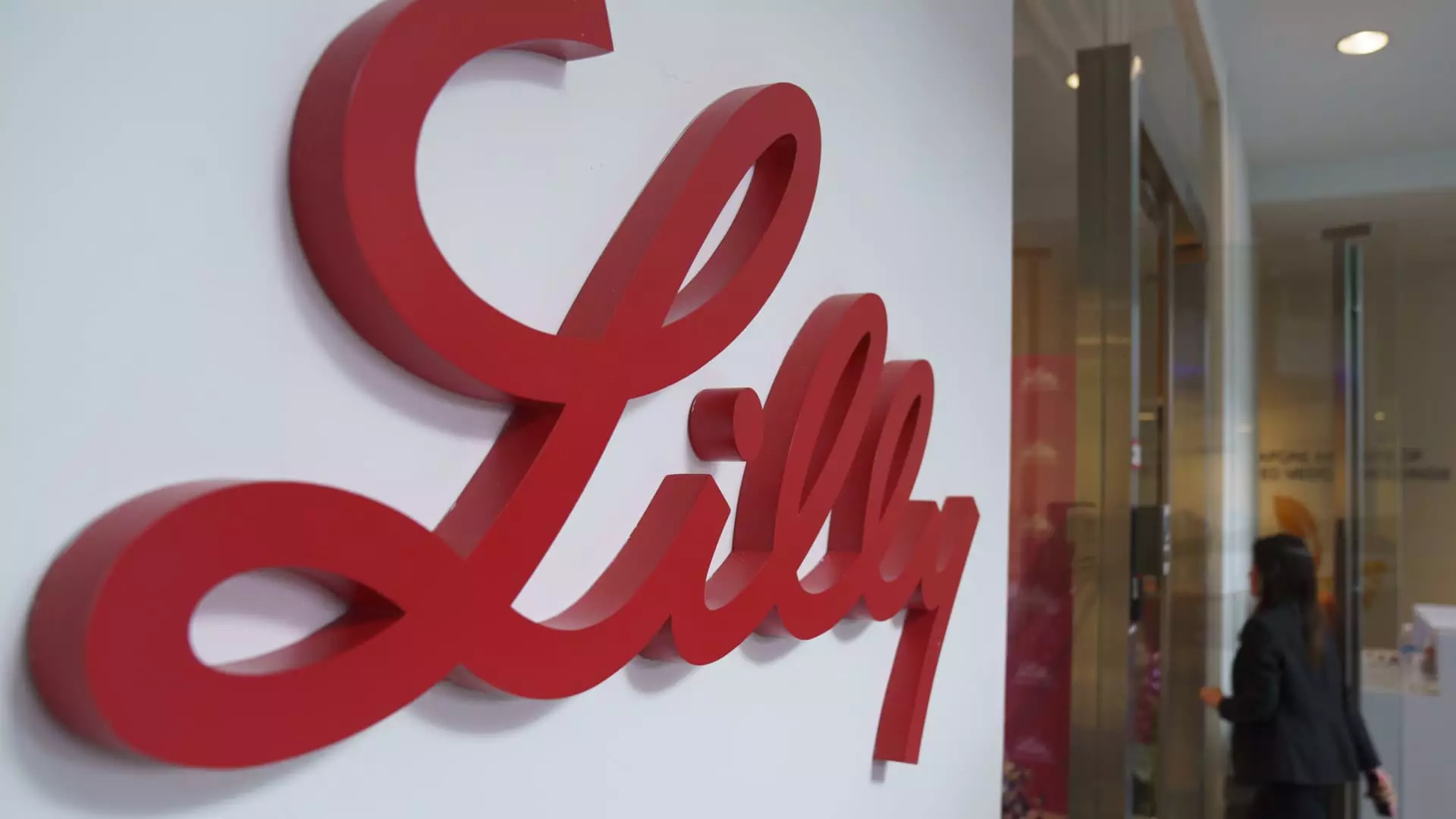Eli Lilly, a frontrunner in diabetes and weight loss medication, recently recalibrated its revenue expectations for the upcoming fiscal year, reflecting a more tempered outlook amid aggressive market dynamics. As of this week, the pharmaceutical giant anticipates its total revenue for 2024 to hover around $45 billion, a slight reduction from its earlier projection of between $45.4 billion and $46 billion. Despite this adjustment, it’s important to recognize that this forecast still signals a remarkable 32% increase from the previous year, highlighting the company’s overall upward trajectory in a challenging landscape.
The news prompted an immediate reaction from investors, sending Eli Lilly’s shares down by over 7% during midday trading. This decline underscores the broader apprehension in the market about the sustainability of growth in the company’s product lines, particularly as they struggle to keep pace with market demands. The market’s reaction serves as a reminder of the delicate balance between ambitious corporate projections and the realities of consumer demand.
In order to combat these challenges, Eli Lilly has been heavily investing in its manufacturing capabilities to meet the unprecedented demand for its diabetes medication Mounjaro and its obesity drug Zepbound. The company has allocated substantial resources to expand production of these incretin-based therapies, showing a commitment to overcoming supply constrictions. Notably, CEO Dave Ricks expressed confidence in the supply chain enhancements, indicating that additional manufacturing capacity would increase output by at least 60% in the first half of the year compared to the same period last year.
Eli Lilly is not entering this battle alone; it faces fierce competition from rival firms like Novo Nordisk, intensifying the race for market share in an already burgeoning sector. To remain pertinent, Lilly is also reportedly in the development phase of a more patient-friendly obesity pill, paving a pathway for broader accessibility and increased market penetration. Ricks anticipates a potential approval for this new product as soon as early next year, a move that could be pivotal in bolstering the company’s portfolio.
Looking ahead, Eli Lilly has its eyes set on ambitious sales goals, forecasting total sales to reach between $58 billion and $61 billion for fiscal 2025. While they strive to maintain a competitive edge, the company reflects on the previous year’s performance and the nearly 45% growth in the U.S. incretin market, a rate they projected would be even higher. This acknowledgment of adjusted growth expectations reinforces the need to navigate the complexities of an evolving market where consumer demand can fluctuate rapidly.
While Eli Lilly’s revised revenue projections may come as a setback, they also illustrate a proactive approach in responding to market realities. With ongoing investment in manufacturing and product development, the company is positioning itself to adapt and thrive amidst substantial industry challenges.

